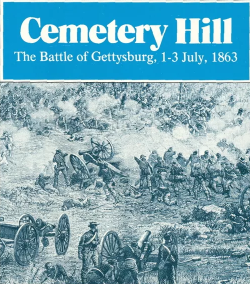
Cemetery Hill, subtitled "The Battle of Gettysburg, 1–3 July 1863", is a board wargame published by Simulations Publications, Inc. (SPI) in 1975 as part of the "quadrigame" Blue & Gray: Four American Civil War Battles that simulated four battles of the American Civil War. Cemetery Hill was later released as a stand-alone "folio" game.
Linda D. Mosca was the first commercially published female board wargame designer. In the mid-1970s, when the wargame industry was dominated by men, she was the only woman employed in a creative role.
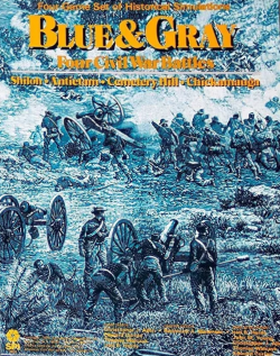
Blue & Gray: Four American Civil War Battles is a board wargame originally published by Simulations Publications, Inc. (SPI) in 1975 that simulates four battles from the American Civil War.

Island War: Four Pacific Battles is a collection of four board wargames published in 1975 by Simulations Publications Inc. (SPI) that simulates various battles between American and Japanese forces during the Pacific Campaign of World War II.

Lee Moves North, originally titled Lee at Gettysburg and subtitled "The Confederate Summer Offensive, 1862 & 1863", is a board wargame published by Simulations Publications Inc. (SPI) in 1972 that simulates Robert E. Lee's summer offenses of 1862 and 1863 during the American Civil War

MechWar '77, subtitled "Tactical Armored Combat in the 1970s", is a board wargame published by Simulations Publications Inc. (SPI) in 1975 that simulates hypothetical tank combat in the mid-1970s between various adversaries, using the same rules system as the previously published Panzer '44.

Napoleon at War, subtitled "Four Battles", is a collection of four board wargames published by Simulations Publications Inc. (SPI) in 1975 that simulates various battles fought by Napoleon.

Bloody Ridge, subtitled "Turning Point on Guadalcanal, September 1942", is a board wargame published by Simulations Publications Inc. (SPI) in 1975 that simulates the Guadalcanal Campaign during World War II. The game was originally published as part of the Island War: Four Pacific Battles "quadrigame" — a gamebox containing four games simulating four separate battles that all use the same rules. Bloody Ridge was also published as an individual "folio game."
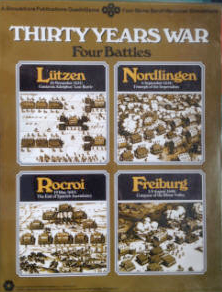
Thirty Years War, subtitled "Four Battles", is a "quadrigame" — four separate board wargames packaged in one box that use a common set of rules — published by Simulations Publications Inc. (SPI) in 1976. The four games simulate different battles during the Thirty Years' War, and were sold individually as well as in the quadrigame format. Some of the games were well received by critics, but overall, the quadrigame did not sell well.

Rocroi, subtitled "19 May 1643 – The End of Spanish Ascendancy", is a board wargame published by Simulations Publications Inc. (SPI) in 1976 that simulates the 1643 Battle of Rocroi during the Thirty Years' War. Rocroi was originally sold as one of four separate games packaged together in Thirty Years War, a "quadrigame", but it was also published as an individual game. It received mixed reviews from critics, some of whom called it a "bland tactical problem", while others declared it was the best game of the four in the Thirty Years War box.

Breitenfeld, subtitled "Triumph of the Swedish System", is a board wargame published by Simulations Publications Inc. (SPI) in 1976 that simulates the 1642 Battle of Breitenfeld during the Thirty Years' War. Breitenfeld was a free game that appeared in Strategy & Tactics, designed to promote SPI's soon-to-be-launched wargame Thirty Years War. Breitenfeld proved popular and was also published as part of SPI's "folio" series of games.

Blue & Gray II, subtitled "Four American Civil War Battles", is a collection of four board wargames originally published by Simulations Publications, Inc. (SPI) in 1975 that each simulate a battle from the American Civil War. It is the sequel to Blue & Gray published earlier in the year. Each of the four games was also published as individual "folio games."
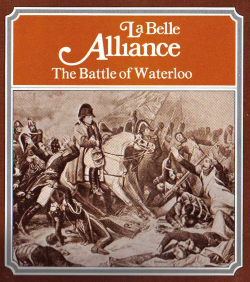
La Belle Alliance: The Battle of Waterloo is a board wargame published by Simulations Publications Inc. (SPI) in 1976 that simulates the Battle of Waterloo in 1814. It was one of four games that were published as part of the "quadrigame" titled Napoleon's Last Battles, but was also released as an individual "folio game", packaged in a shrinkwrapped cardboard folio.

The Battle of Nations, subtitled "The Encirclement at Leipzig, 16-19 October 1813", is a board wargame published by Simulations Publications Inc. (SPI) in 1975 that simulates the Battle of Leipzig in 1813. It was one of four games that were published as part of the "quadrigame" titled Napoleon at War, but was also released as a "folio game", packaged in a shrinkwrapped cardboard folio. It was popular in a 1976 poll of favorite wargames, and critics also gave it favorable reviews.

Jena-Auerstadt: The Battle for Prussia is a board wargame published by Simulations Publications Inc. (SPI) in 1975 that simulates the twin battles of Jena and Auerstadt in October 1806. It was one of four games that were part of the "quadrigame" titled Napoleon at War, but it was also released as an individual "folio game" packaged in a shrinkwrapped cardstock folio. Jena-Auerstadt was rated highly in a 1976 poll of favorite wargames, but critics questioned whether its simplicity was capable of simulating a complicated two-part battle.

Leyte: Return to the Philippines, October 1944 is a board wargame published in 1975 by Simulations Publications Inc. (SPI) that simulates the return of General Douglas MacArthur to the Philippines during World War II. The game was originally published as part of the four-game collection Island War: Four Pacific Battles, but was also released as an individual game. Leyte was not considered an outstanding success by critics.
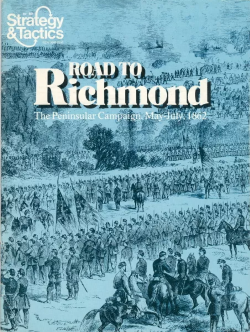
Road to Richmond, subtitled "The Peninsular Campaign, May–July, 1862", is a board wargame published by Simulations Publications Inc. (SPI) in 1977 that simulates the Peninsula Campaign of 1862 during the American Civil War.
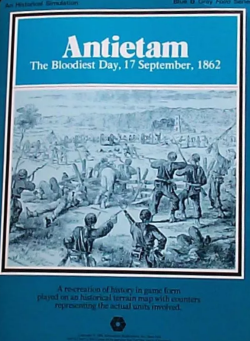
Antietam: The Bloodiest Day, 17 September 1862 is a board wargame published by Simulations Publications, Inc. (SPI) in 1975 that simulates the Battle of Antietam during the American Civil War. The game was originally part of the four-game collection Blue & Gray: Four American Civil War Battles, and was also released as a stand-alone "folio" game. It proved to be one of SPI's most popular games in the year following its publication.

Chickamauga: The Last Victory, 20 September 1863 is a board wargame published by Simulations Publications, Inc. (SPI) in 1975 that simulates the Battle of Chickamauga during the American Civil War. The game was originally part of the four-game collection Blue & Gray: Four American Civil War Battles, and was also released as a stand-alone "folio" game.
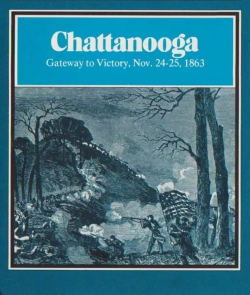
Chattanooga: Gateway to Victory, Nov. 24-25, 1863 is a board wargame published by Simulations Publications, Inc. (SPI) in 1975 that simulates the Battle of Chattanooga during the American Civil War. The game was originally part of the four-game collection Blue & Gray II, and was also released as a stand-alone "folio" game.



















